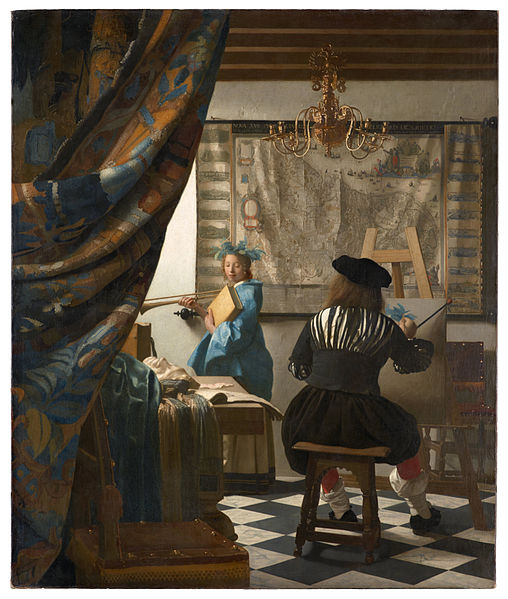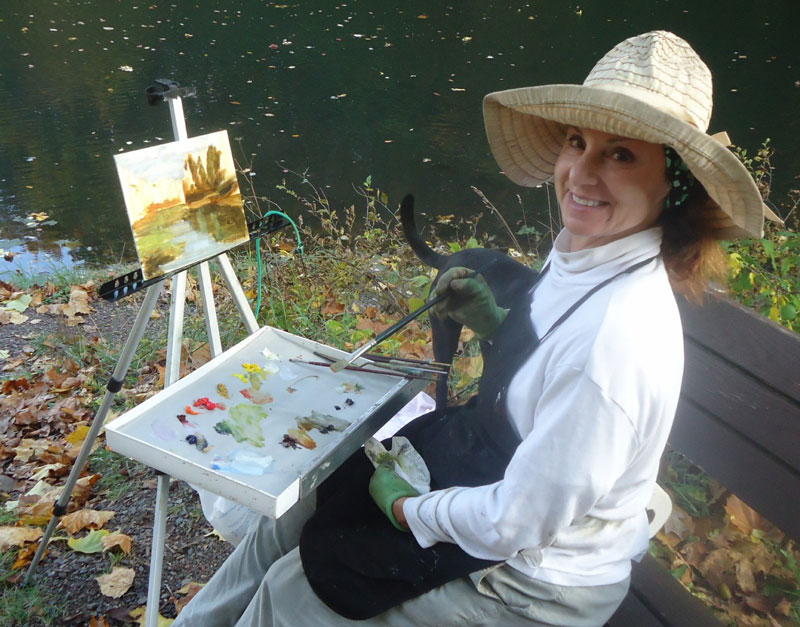Copyright, fair use and public domain
Just as you would provide a citation and reference for any texts you quote from, you should also provide information on the source and ownership of images you include in your resources. This resource will help you to find and use images in your learning resources without breaking copyright law.
UHI has a copyright policy. This policy can be found in the Appendices of the University Regulations.
What is copyright?
Copyright is a legal right which protects intellectual property - something created, such as a painting or a photograph when an idea from the mind is put into a physical form.
Copyright applies automatically when an item such as photograph or painting is created and provides its creator with the exclusive right to decide what to do with it, if it can be copied for example, or used in publications in print or online.
Images, including photographs, are protected until 70 years after the death of the owner.
Current legislation on copyright can be found in the Copyright, Designs and Patents Act 1988
Some institutions retain copyright of all resources created by employees. You should check your terms and conditions in relation to work you create during your employment.
What is fair use?
'Fair use' does not mean that in education it is acceptable to make use of any copyrighted material without permission.
Fair use (or 'fair dealing') effectively allows us to use copyrighted materials without permission, to benefit society or for the public good; for news reporting (although this may not apply to photographs), for example, or critical analysis and review. The use of copyrighted material must be reasonable and the owner of the work must be sufficiently acknowledged.
"‘Fair dealing’ is a legal term used to establish whether a use of copyright material is lawful or whether it infringes copyright. There is no statutory definition of fair dealing - it will always be a matter of fact, degree and impression in each case. The question to be asked is: how would a fair-minded and honest person have dealt with the work?"
Breach of Copyright
If you are found to be using copyrighted material without permission, you may be asked to remove this or the copyright owner has the option to pursue compensation in the courts.
If you simply pull an image from a web search without checking permission, you may inadvertently pick up a stock image which requires a paid for licence to use. The same software which allows us to search the web for images also makes it simple for stock image companies to search out those using their images, even if the file name has been changed or the image edited. Getty images has established a reputation for issuing written demands for payment and pursuing those found using their stock images without a licence.
"SEATTLE—April 28, 2011 - Getty Images, a leading creator and distributor of visual content and other media, today announced that it has acquired PicScout, a leader in identifying image use, metadata and licensing information on the web."
PR Newswire, 27 April, 2011
What is public domain?
Works for which copyright has expired, or does not apply, are publicly owned i.e. in the 'public domain'.
Many government or publicly owned organisations automatically put their images into the public domain, waiving copyright and these can be great sources of images for educational use. For example, Nasa Images and the UK Parliament on Flickr.
If an individual wishes to waive copyright and make their images freely available, there are websites which collect and make available these images under a Creative Commons Public Domain Dedication.

'The Art of Painting' by Jan Vermeer - Wikimedia / Public domain

All efforts have been made to ensure materials created by the EDU comply with current accessibility guidelines (JISC: Support for learners with disabilities).
If further assistance is required with accessibility matters please contact the student support section in your academic partner UHI: Accessing learner support.
Links
Unless otherwise stated all external links will open in a new tab/window
We welcome any comments on how to improve this unit. Please feel free to pass these on at any time.
If you have any difficulty viewing this resource please contact EDU (edu@uhi.ac.uk) with:
- the name of the resource;
- a description of the problem (please give as much detail as possible);
- the section of the resource where the problem occurred;
- your internet browser (you can check your browser version at: http://detectmybrowser.com/).
UHI provides links to external sources of information and may refer to specific Web sites, products, processes or services within this resource. Such references are examples and are not endorsements and whilst every effort is taken to ensure the accuracy of information provided UHI is not responsible for any of the content or guidance. You are advised to exercise caution.
Download a copy of this resource in PDF format.
You can also print individual pages by printing directly from the browser.
